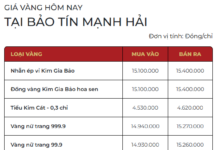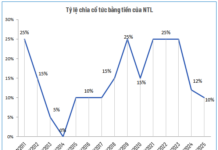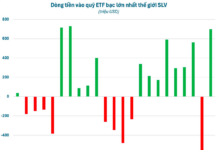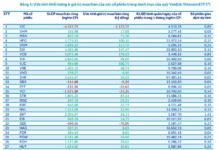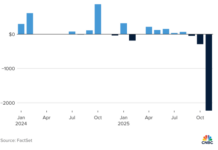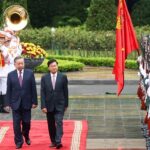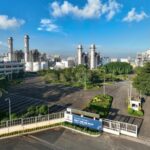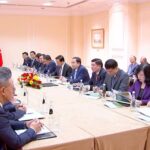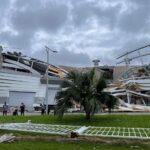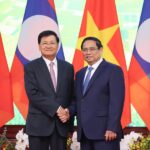Vietnam’s economic growth hinges on strategic investments in gas infrastructure, liquefied natural gas (LNG) contracts, and pivotal policy reforms, according to research by energy consulting and research firm Wood Mackenzie. The country’s gas demand is projected to surge, rising by an average of 12% annually and potentially tripling by the mid-2030s.
Gas consumption will continue to climb due to escalating energy requirements, increasing from 8 million tons of oil equivalent (Mtoe) in 2020 to a projected 20 Mtoe by 2035. During this transition, coal consumption is expected to decrease by 7 Mtoe by 2050.
Wood Mackenzie’s Asia-Pacific Vice President shed light on the pivotal role of the power sector in gas consumption, forecasting that gas will contribute up to 14% of total electricity generation by 2030: “Gas-fired power generation is becoming increasingly essential to avert potential power shortages in the near future. As coal-fired power generation plateaus in the coming years and renewables continue to face challenges such as intermittency and grid constraints, gas and LNG will be crucial in ensuring energy security and supporting sustainable economic growth.”
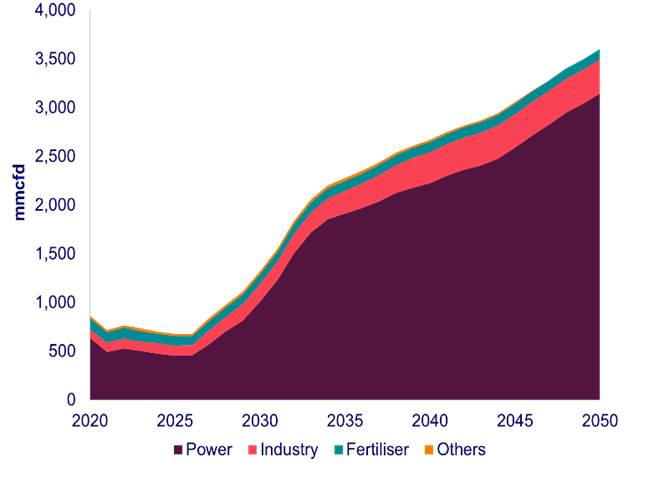
Vietnam’s gas demand by sector. Source: Wood Mackenzie (units in mmcfd – million cubic feet per day)
Alongside the projected surge in gas demand, Vietnam also faces challenges in sustaining domestic production. Wood Mackenzie predicts that future Yet-To-Find (YTF) gas resources post-2030 will be distributed across both northern and southern Vietnam.
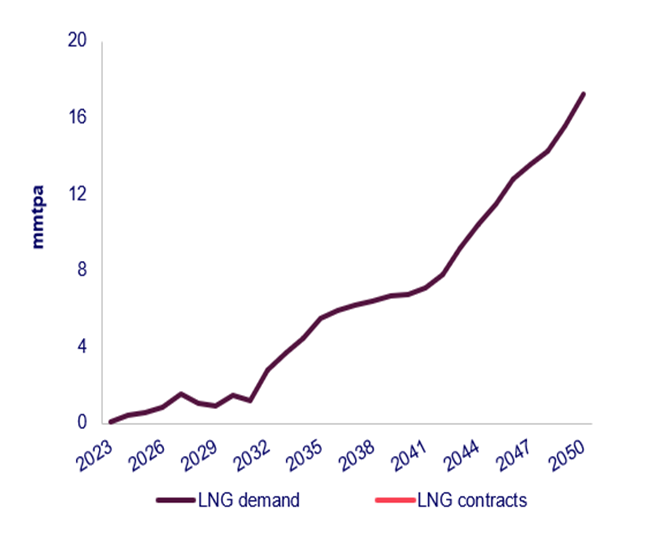
Liquefied Natural Gas (LNG) demand and contracts in Vietnam. Source: Wood Mackenzie
Wood Mackenzie’s research reveals that Vietnam is currently only exposed to the spot market for LNG purchases and has not entered into any long-term LNG contracts. This shortage of contracted LNG supply, coupled with depleting domestic resources, heightens the risk of price volatility in Vietnam and the potential for power shortages or gas distribution issues in the future.
Developing new gas infrastructure, according to Wood Mackenzie, would alleviate concerns about gas shortages. Vietnam’s primary pipeline network is currently concentrated in the southern region, where Ho Chi Minh City, the economic hub, is located. Two LNG terminals have been constructed in southern Vietnam, with the Thi Vai LNG terminal already operational and the Hai Linh terminal expected to come online in September 2024. Several other LNG terminal projects are in the feasibility study phase and are projected to be operational in the early 2030s.
“The Vietnamese government’s approval of the Power Development Plan VIII implementation plan in May 2023 underscores the importance of LNG-to-power projects, aiming to add 22.4 GW of power generation capacity from LNG by 2030,” said Yulin Li, Wood Mackenzie’s gas and LNG research analyst. However, to fully capitalize on the potential of gas and LNG, Vietnam needs a dedicated energy mechanism to focus on energy policies and regulations.
Wood Mackenzie’s analysis suggests that Vietnam should forge stronger collaborations with solution providers capable of meeting the country’s requirements. Currently, several reputable suppliers are operating in Vietnam, including Petronas, one of the world’s largest integrated LNG producers. Petronas produces LNG by leveraging and advancing technologies to reduce emissions, such as electrification, flaring and venting reduction, and carbon capture and storage (CCS).
Sure, I can assist with that.
The President of Laos Welcomed by Vietnamese Counterpart, Mr. Tô Lâm
On the morning of September 10, a grand welcoming ceremony was held at the Presidential Palace for General Secretary and President of Laos, Thongloun Sisoulith, his wife, and the high-level delegation from the Lao People’s Democratic Republic. The event was conducted with the highest protocol afforded to a visiting head of state.
“Vietnamese Businesses Need to Ramp Up Investments in Russia to Match the Bilateral Relationship’s Potential”
The parliamentary leader encouraged the business community to remain united and law-abiding, adhering to Russian legal standards. He emphasized their role in fostering development within the Russian Federation and their native Vietnam, thus strengthening the bilateral comprehensive strategic partnership between the two nations.
A Meeting of Great Minds: Prime Minister Pham Minh Chinh and the Lao People’s Revolutionary Party Central Committee’s General Secretary and President
On the afternoon of September 10, at the Government Headquarters, Prime Minister Pham Minh Chinh met with the General Secretary and President of the Lao PDR, Mr. Thongloun Sisoulith. This meeting was held on the occasion of the official state visit to Vietnam by the Lao leader, who was accompanied by a high-level delegation of the Lao People’s Revolutionary Party and Government.








